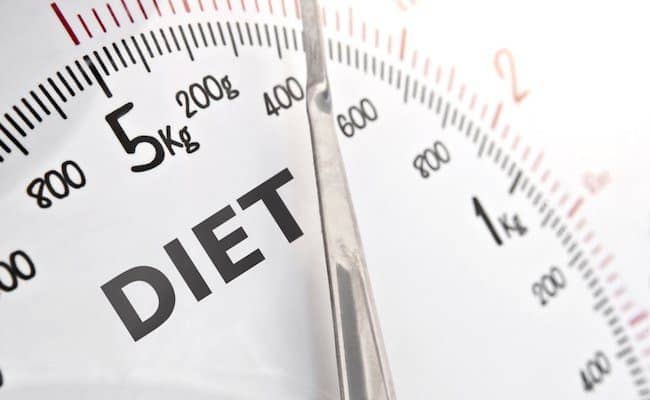
Running is one of the highest calorie burn exercises, and because of this is it is a popular choice as part of a weight loss program. How much you will need to run in order to lose weight depends on a number of factors including how much you eat, how much you can run without getting injured and consistency.
General exercise guidelines for adults recommend moderate exercise about 30 minutes per day. However, for weight loss exercise will most likely have to be more than this.
Balance calories and quality
Anytime you want weight loss, calorie intake should be lower than calorie burn. Just because you start running doesn’t mean you’ll automatically lose weight. It can be easy to increase your food intake as you increase your exercising.
Obviously you don’t need to do something as drastic as starving yourself; that will only cause more damage. However, if you’re not careful it can be easy to match your extra calorie burn from running with extra food intake which could slow weight loss efforts.
If you’re unsure how much food to cut out, start by cutting down food intake about 20%, and speak with a health professional for more individual guidance for weight loss.
Quality of calories is just as important as quantity. Just because you start running doesn’t mean you have the green light to eat unhealthy foods. It’s still important to eat a diet high in fruits, vegetables, whole grains, proteins and healthy fats. (See also: Why you should avoid empty calorie foods)
Stay injury free
How much running your body can handle is completely individualized. It’s true the more you run the more calories you will burn, but if you jump up your mileage too quick it can land you on the sidelines unable to continue running.
Start with a beginner training plan and have recovery days in between runs. Start out with a doable amount, and gradually increase your mileage.
Following a training plan can give structure, guidance, long term progress and accountability. Remember, running for weight loss is a long term commitment, and long term results are more important than the results from 1 day or 1 week. Running too much too soon will only hamper your long term weight loss goals.
Vary the intensity
Running the same pace for every run won’t be as effective for weight loss as varying your running intensities. Running faster or slower on different days for varying lengths of time can help your body burn more calories than just running the same pace all the time.
Some runs will be longer and slower, but some runs should be shorter with some speed work. Most training plans will have varied intensity runs built into the program.
Examples of varying your running intensity can be:
- Interval training: warm up, run 2 minutes hard, 3 minutes easy, repeat 5 times, cool down.
- Do a hill workout: warm up, sprint up the hills, jog them down. Repeat as many times as necessary and cool down.
- Go to a local high school track and do some 400, 800 or 1600 meter repeats.
Strength train
Strength training can help increase muscle mass and add an additional calorie burn exercise. Running strengthens muscles and is an aerobic exercise, but adding in weight training can help prevent injury and be extra beneficial for weight loss.
Start by strength training major muscle groups 2 days a week, doing 2-3 sets per muscle group and 10-15 reps per set. Talk with an exercise professional for more specific advice with strength training.
How much is needed to prevent weight gain?
If you reach your weight goal while running, congratulations but don’t stop running. According to a 2003 review article from Obesity Reviews, in order to prevent weight gain in previously obese people, most need to exercise between 60-90 minutes of moderate activity per day. See also: How much exercise is enough to lose weight.
It’s more than just the time you spend running
Any additional activity throughout the day, besides your planned run, is beneficial for health and reaching your weight loss goals. Think of ways to get more movement throughout the day besides your planned running. Walking further, taking stairs instead of the elevator, riding your bike to work, etc. are all examples of getting more movement that can help you reach your health goals faster.
Conclusion
How much you need to run for weight loss is dependent on many factors. You can speed up your weight loss efforts with running by paying attention to your calorie intake and making healthy food choices.
Start your training slowly and increase running progressively instead of all at once to avoid getting injured.
Adding in weight training can increase calorie burn and stimulate muscle growth, which is beneficial for weight loss. Once the extra weight is off, you will still need to exercise to prevent weight gain.
Lastly, think of other ways to increase your movement throughout the day to increase over all calorie burn besides your planned run.
References used in this article










